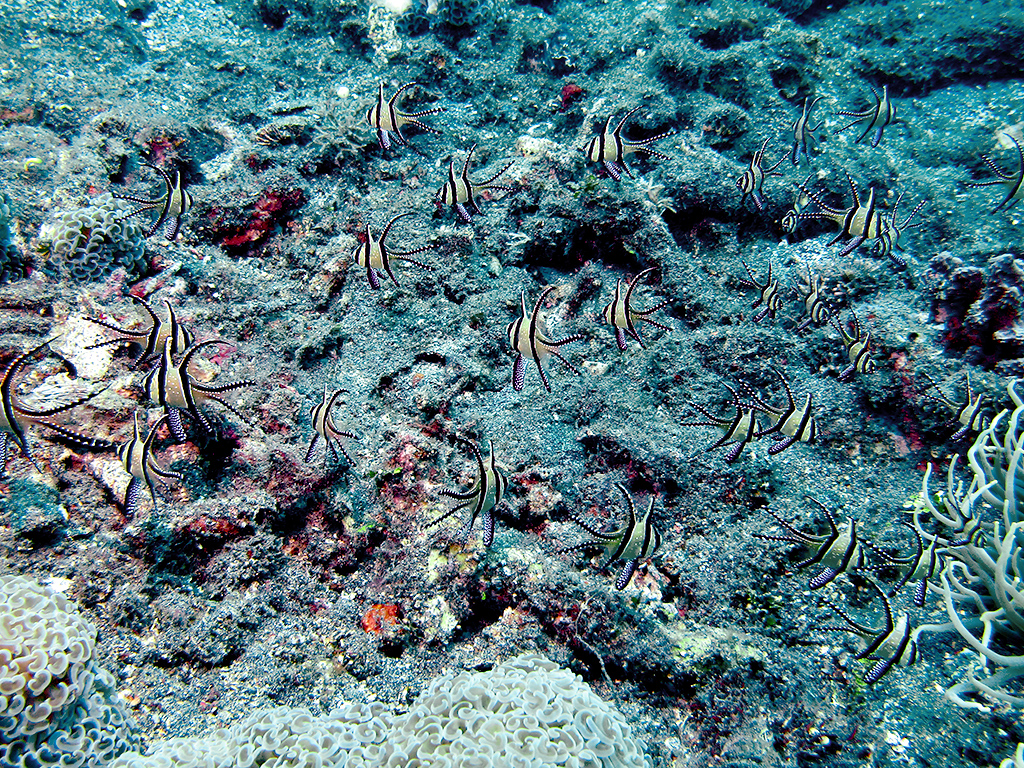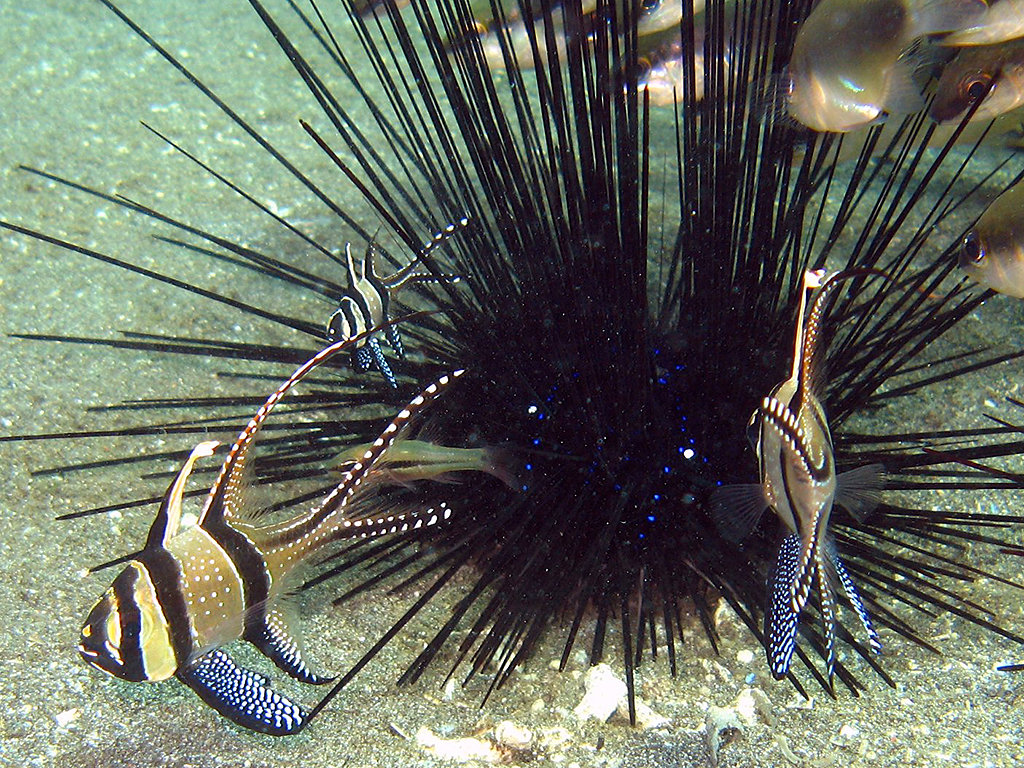Banggai cardinalfish
Pterapogon kauderni

The male broods the eggs in his mouth
The Banggai cardinalfish has a very peculiar way to spawn. The female courts the male she is interested in and he fertilises her eggs. When the eggs have been fertilised, she lays them in his mouth! He then carries the eggs in his mouth until they hatch after a few weeks. The fry stay an additional 1–2 weeks in their father’s mouth until they are large enough to swim out and make it on their own.
During all this time, the father eats nothing. This strategy is known as mouthbrooding or oral incubation, and it is a rather clever way that some species use to protect their young.

Photo: Jitka-Erbenova-CC-BY-SA
Hides among sea urchins
The Banggai cardinalfish is very good at hiding from predators. It may not look like it, since the fish has such a characteristic shape and strongly contrasting colours. But the black stripes on the fish’s body makes it easy for them to hide between the spines of sea urchins. It blends in well, and it is a rather uninviting place for predators to go.
The fry of the Banggai cardinalfish also hide between the tentacles of sea anemones. It is also practical to have stripes in a large school – just like with a herd of zebras, it is difficult for a predator to focus on a single individual when the stripes make it hard to see what’s what.

Photo: Silke-Baron-CC-BY
Endangered species
The natural habitat of the Banggai cardinalfish is a very limited area: coral reefs around the Banggai Islands of Indonesia. In the 90s, the species rapidly became a popular aquarium fish. It was caught to such a degree that it soon became endangered. It is actually quite easy to breed Banggai cardinalfish in captivity, so if you want to buy one – make sure it is not caught in the wild!
Distribution worldwide

Around the Banggai Islands of Indonesia.
White marking = Distribution
Threat based on the Red List

Trade regulations
CITES: D-listed.